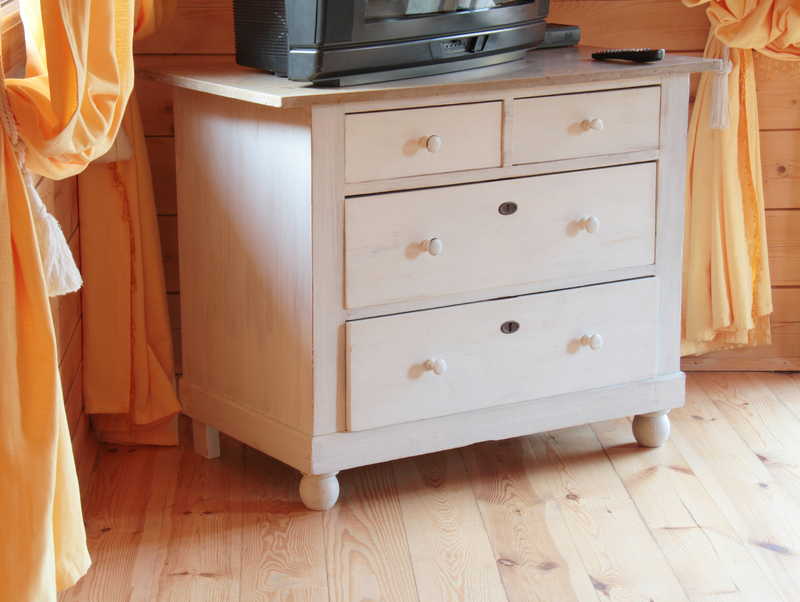Creating a Greener Office Environment
Posted on 29/08/2025
Creating a Greener Office Environment: The Ultimate Guide
Creating a greener office environment is more than just a trend; it's an essential step towards sustainability in the modern business landscape. Across the world, companies are striving to reduce their carbon footprints, enhance workplace wellness, and boost operational efficiency. In this comprehensive guide, you'll learn how to transform your workspace into an eco-friendly office, uncover practical steps, and understand the significant benefits for your organization and planet.
Why Aim for a Greener Office Environment?
With the growing awareness of climate change and environmental impact, organizations are seeking meaningful ways to align their operations with sustainable practices. Going green in the office is not just about saving energy or recycling paper. It's about fostering a culture that values the environment while supporting productivity, employee health, and corporate responsibility.
- Corporate Image: Customers and partners are increasingly drawn to businesses with strong environmental credentials.
- Cost Savings: Energy and resource efficiency can lead to significant operational savings over time.
- Employee Well-Being: A healthier, greener office boosts morale and promotes productivity.
- Environmental Impact: Each green initiative helps mitigate the office's environmental footprint.

Key Strategies for Creating a Greener Office Space
Building an eco-friendly office environment involves multiple layers, from energy policies to office supplies. Here's how to make your office greener with effective and practical strategies:
1. Energy Efficiency is Fundamental
- Switch to LED Lighting: Replace incandescent bulbs with energy-efficient LED lights that use less power and last longer.
- Install Motion Sensors: Use occupancy sensors to automatically switch off lights and electronics in unused areas.
- Upgrade Equipment: Choose ENERGY STAR-rated office appliances and computers that consume less electricity.
- Embrace Natural Lighting: Maximize daylight by rearranging workspaces and using glass partitions to reduce artificial lighting needs.
2. Rethink Printing and Paper Usage
- Go Digital: Encourage document sharing and collaboration through cloud platforms to minimize paper printouts.
- Print Responsibly: When printing is necessary, use double-sided options and recycled paper.
- Set Print Quotas: Implement tracking systems to reduce unnecessary printing.
- Shred and Recycle: Ensure all shredded documents are properly recycled to close the paper loop.
3. Sustainable Purchasing Policies
- Eco-Friendly Office Supplies: Choose biodegradable, recycled, or sustainably produced stationery and furniture.
- Bulk Buying: Order in large quantities to reduce packaging material and minimize deliveries.
- Local Sourcing: Support local suppliers to reduce transportation emissions and strengthen community businesses.
The Role of Waste Reduction in a Green Workplace
Reducing waste in the office is one of the pillars of creating a sustainable workspace. Here's how you can efficiently reduce, reuse, and recycle in the workplace:
Smart Waste Separation
- Recycling Stations: Set up clearly marked bins for paper, plastics, electronics, and general refuse in key office spots.
- Composting: If feasible, introduce composting for organic waste like coffee grounds and food scraps.
- Regular E-Waste Collection: Partner with certified recyclers to dispose of electronic waste safely and responsibly.
Choose Reusable Over Disposable
- Supply reusable mugs, plates, and cutlery in the break room.
- Discourage Single-Use Plastics: Ban items such as plastic straws, water bottles, and utensils.
Green Office Design and Indoor Plant Life
Office layout and decor have a significant impact on both sustainability and employee well-being. Biophilic office design is on the rise--here's why it matters and how to implement it:
Benefits of Indoor Plants
- Improved Air Quality: Plants filter toxins and increase oxygen, leading to fresher air.
- Enhanced Mood and Productivity: Studies show that exposure to greenery reduces stress and enhances cognitive function.
- Natural Insulation: Strategically placed plants can help regulate indoor temperature.
Designing for Sustainability
- Modular Furniture: Choose flexible furnishings that can be reused or repurposed instead of replaced.
- Eco-Friendly Materials: Opt for desks and chairs made with certified sustainable wood or recycled metals.
- Low-VOC Paints and Carpets: Use finishes and flooring options that emit minimal volatile organic compounds for better indoor air quality.
Encouraging Green Commuting Options
Employee commuting contributes considerably to an office's total carbon emissions. Shifting towards cleaner and greener commuting methods makes a huge difference:
Promote Public Transportation & Carpooling
- Incentives: Provide subsidies for public transport or rideshare programs to encourage low-emission travel.
- Flexible Hours: Allow staggered schedules to lessen peak-time travel, thereby reducing congestion and emissions.
Support Cycling and Walking
- Install Bike Racks: Secure, on-site bicycle parking encourages cycling to work.
- Provide Shower Facilities: A small investment for the organization, but a big boost to active commuting.
Fostering a Green Office Culture
Creating a sustainable office environment requires more than policies--it's about inspiring your team to be environmental champions:
- Green Champions: Appoint volunteers to lead initiatives, monitor progress, and suggest new ideas.
- Workshops and Training: Organize events on composting, energy conservation, or sustainable living.
- Recognition and Rewards: Celebrate successes and incentivize employees who contribute significantly to green initiatives.
Effective Communication
Regular Updates: Keep staff informed about green policies, progress, and goals through emails, digital dashboards, or team meetings.
Encourage Feedback: Invite suggestions from all team members on how to create a greener office environment.
Leveraging Technology for a Sustainable Office
Modern advancements in technology provide new pathways for sustainability in the office setting:
- Smart Energy Management: Use IoT sensors and dashboards to track and optimize energy consumption.
- Video Conferencing: Reduce travel needs by holding meetings online whenever possible.
- Remote Work: Allow or encourage employees to work from home part-time to decrease resource use and commuting emissions.
Monitoring, Measuring, and Reporting Progress
A critical factor in creating a sustainable office environment is consistent measurement and reporting:
- Set Clear Targets: Establish measurable goals for energy use, waste reduction, and resource conservation.
- Use Eco-Certifications: Pursue certifications like LEED, BREEAM, or Green Seal to validate and guide your progress.
- Annual Sustainability Reports: Share your results internally and externally to build credibility and encourage ongoing improvement.
The Business Case for a Greener Office
Embracing a greener office environment is aligned with ethical responsibility--but it's also a savvy business strategy:
- Reduced Operational Costs: Efficient resource use translates to lower utility bills and operational expenses.
- Talent Attraction and Retention: Modern workers prefer companies that show commitment to environmental stewardship.
- Regulatory Compliance: Stay ahead of potential government regulations and avoid penalties.
- Market Differentiation: Stand out in the market with a strong, authentic sustainability message.
Challenges and Solutions in Green Office Implementation
While the benefits are clear, creating a green office environment may face certain obstacles. Here's how to overcome them:
- Resistance to Change: Use education, incentives, and leadership support to motivate staff engagement.
- Budget Constraints: Prioritize low-cost or phased improvements such as switching lights and establishing recycling stations.
- Lack of Expertise: Partner with sustainability consultants or utilize online resources to guide your efforts.

Conclusion: Start Creating Your Greener Office Today
Achieving a greener office environment doesn't happen overnight, but even small actions can cascade into substantial impacts. By rethinking energy use, waste, office supplies, and company culture, your organization can play a vital role in the global pursuit of sustainability. Commit to the journey--every step counts toward creating a brighter, greener future for your business and our planet.
Frequently Asked Questions about Greener Offices
- What is a green office environment?
A workspace designed to minimize its impact on the environment through sustainable practices, energy efficiency, and fostering employee well-being. - How can employees contribute to a more sustainable office?
By conserving energy, reducing waste, using digital documents, recycling, carpooling, opting for reusable items, and engaging in office green programs. - Are there certifications for green offices?
Yes, standards like LEED, BREEAM, and Green Seal recognize office buildings and organizations for their sustainable practices.
Transforming your workspace into an eco-friendly office is not just good for the planet--it enhances business performance and employee satisfaction too. Start implementing these actionable strategies and experience the benefits of a greener office environment today!









